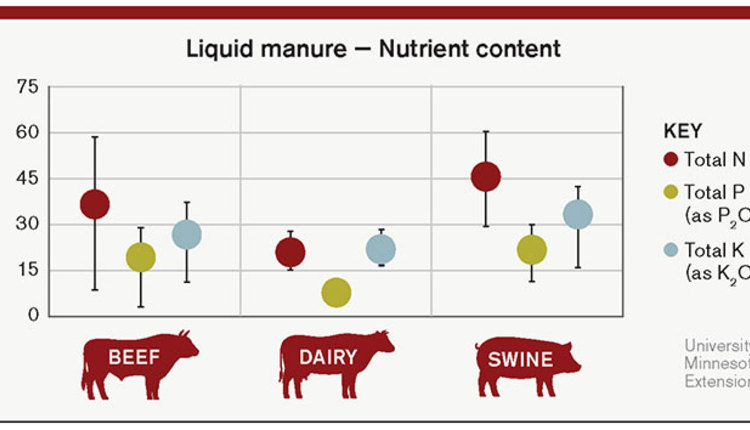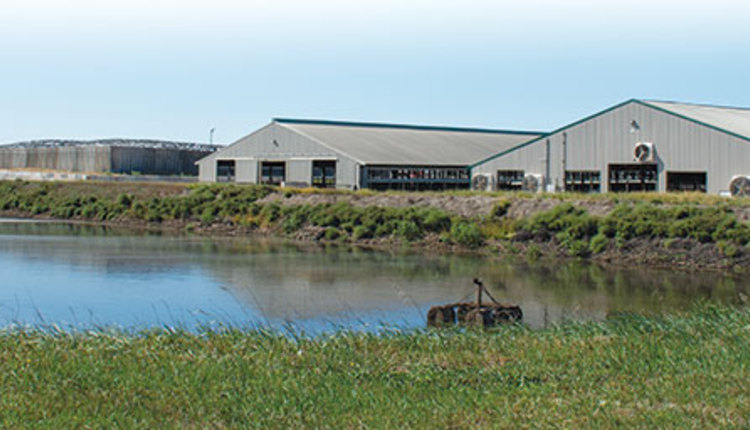
Farm owners realize that responsible manure management is a requirement, not an option. High fertility fields — especially those that test high in phosphorus (P) — can be difficult to manage. A Concentrated Animal Feeding Operations (CAFO) Nutrient Management Plan (NMP) may limit the amount of P added each year (as manure or commercial fertilizer) to not exceed annual crop removal.
On many of these farms, as the size of the dairy or livestock enterprise grew, additional cropland had to be purchased or leased to meet the need for more forage. Some of these recently acquired fields are several miles or more from the farm (and from the manure storages). Because of prior management (or mismanagement), many of these recently acquired fields may be much lower in fertility than cropland on the “home farm.”
One farm’s story
This was very similar to the situation we were facing at the William H. Miner Agricultural Research in Chazy, N.Y., as we entered the 21st century. Our dairy had been expanding in cow numbers, and we’d built a new liquid manure pit to meet the needs of the larger herd. About half of our approximately 700 acres of cropland was part of the old Heart’s Delight Farm that preceded the establishment of Miner Institute, and these fields had been farmed (and fertilized) intensively for the previous 30 to 35 years.
The balance of our cropland had been either leased or purchased more recently and was much lower in fertility. Some of this land had what we tongue-in-cheek called “renter’s disease” in that it had been rented by the year with annual crop harvest — usually as hay — but few, if any, nutrients had been added as manure or fertilizer. The NMP for Miner Institute was primarily based on phosphorus, and we had a considerable acreage of land with moderate to high soil test P, and the rest with very low P.
Sampling on repeat
Sequential or repeated sampling of liquid and slurry manure pits isn’t a new idea. At the time, the Penn State University testing lab was offering a three-test manure analysis package at a reduced price designed to encourage farmers to sample manure pits several times as their pits were pumped down. We did repeated sampling over several years and discovered that even after what we thought was thorough agitation of our liquid manure pit, the first of the manure pumped out of the pit was a much different product than what was pumped out as the pit started to empty.
Not only was the manure in the top half of the pit (more or less) lower in solids content, but the nutrient profile was much different on a dry matter (DM) basis. This isn’t surprising since a high percentage of the phosphorus in dairy cow manure is in the solid portion (feces), with much less in the urine.
Once we determined that there were meaningful, repeatable differences, we decided to take advantage of this in our manure management. There’s no dividing line between higher and lower manure P content; not surprisingly, the changes are gradual.
The lower DM, lower P manure was spread on fields on the home farm, which were higher in soil test P, and we could apply this manure at a relatively high rate per acre. This pleased our field crops crew since even with our several tank spreaders, it’s much more efficient to spread manure on fields close to the pit than on fields several miles away. When you’re hauling manure 5 miles, the fewer loads, the better!
This system also complied with the farm’s Nutrient Management Plan, since the low solids/low P manure limited the amount of applied phosphorus on fields testing high in P. Then, as we got to the bottom half of the pit, we started hauling the high solids/high P manure to our far-off fields that could efficiently use the phosphorus as well as the other nutrients in dairy manure.
It has been said that “manure is a multivitamin,” and not only were these distant fields low in phosphorus, but they were low in other nutrients as well. For instance, in previous soil test summaries, we’d found considerable differences in soil test zinc between fields, with much of the difference related to past manuring history. The more dairy manure applied, the higher the soil test zinc analysis.
Create an informed plan
What we did wasn’t research since there weren’t any replicated treatments. But repeated manure analyses over the years, and during various stages of emptying our manure storage, convinced us that the differences in P content — the nutrient of concern in our Nutrient Management Plan — were “real and repeatable.” We determined that we could devise a manure application strategy to take advantage of these differences.
This article appeared in the November 2020 issue of Journal of Nutrient Management on pages 22 and 23.
Not a subscriber? Click to get the print magazine.




